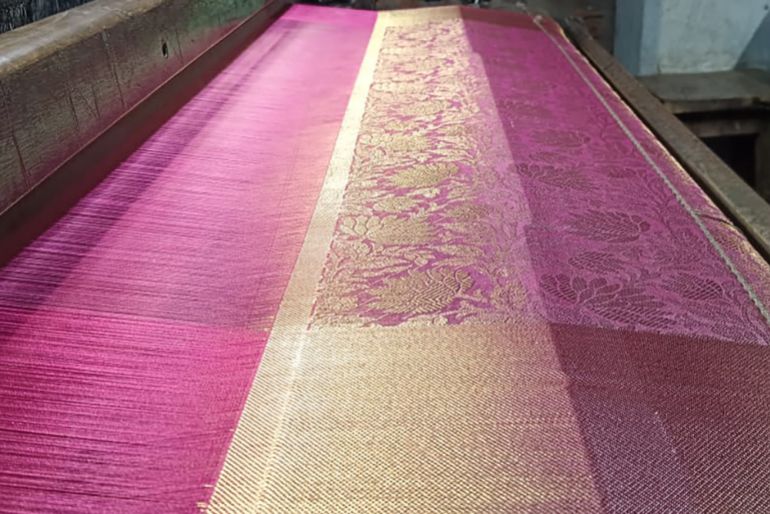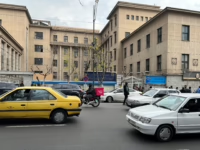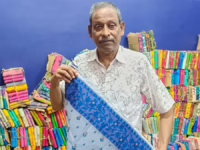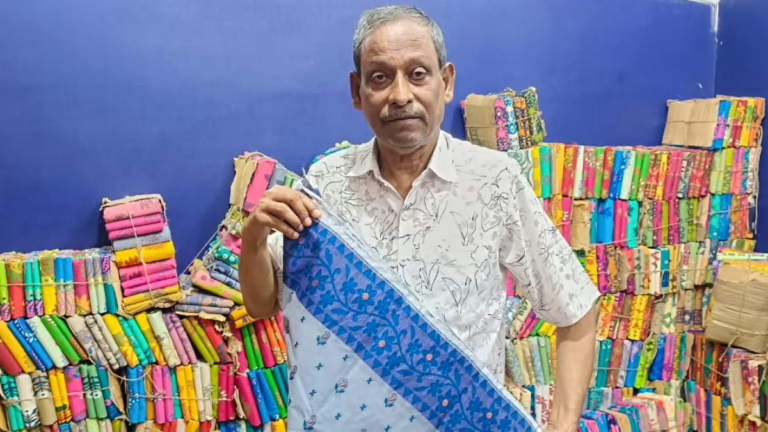Varanasi, India – Mohammed Ahmad Ansari has dedicated his entire life to the intricate craft of weaving Banarasi saris in the cramped, bustling alleys of Varanasi, a city revered as India’s spiritual heartland and the parliamentary seat of Prime Minister Narendra Modi.
At 55, Ansari finds joy in the rhythmic clatter of handlooms, harmonizing with the temple bells and evening azan calls that echo through this ancient city, believed to be one of India’s oldest continuously inhabited settlements, dating back to 1800 BCE. Varanasi is also celebrated for its rich tapestry of Hindu-Muslim cultural fusion.
However, recent times have seen a sharp decline in sari sales, influenced by multiple factors, the most pressing being escalating diplomatic strains between India and Bangladesh.
Since August last year, relations between these historically close neighbors have deteriorated significantly following the political upheaval in Dhaka, where former Prime Minister Sheikh Hasina sought refuge in New Delhi amid a popular revolt against her administration.
Bangladesh holds India partly responsible for its internal challenges, particularly criticizing Modi’s backing of Hasina during her tenure.
In the aftermath, religious minorities, especially Hindus perceived as Hasina supporters, have faced attacks, and Indian enterprises in Bangladesh have been boycotted or targeted amid demands for Hasina’s extradition to face charges at home.
April saw Bangladesh impose restrictions on imports from India, including yarn and rice, prompting India to respond on May 17 by banning imports of ready-made garments and processed foods from Bangladesh via land routes. Although Bangladeshi saris can still enter India, they must now be shipped by sea, a costlier and slower alternative.
Renowned worldwide, Banarasi saris are prized for their luxurious silk fabric, intricate zari embroidery crafted from fine gold and silver threads, and the painstaking effort that can take up to six months to complete a single piece. Prices can soar to 100,000 rupees ($1,130) or more, depending on the intricacy and materials.
“Bangladesh has always been a market-loses-n781bn-in-5-hours/” title=”NGX Equities Plunge: Investors Suffer Massive N781bn Loss in Just Five Hours”>key market, especially during festivals and weddings, but the current ban has slashed our sales by over half,” Ansari shared.
This setback compounds earlier challenges faced by the industry, including the disruptive demonetisation policy that invalidated high-value currency notes overnight, rising electricity costs, the COVID-19 pandemic’s impact, and stiff competition from power-loom-produced saris in regions like Surat, Gujarat.
These cumulative pressures have forced many artisans to abandon weaving, reducing the number of active weavers in Varanasi to roughly 200,000. Many have sought alternative livelihoods, such as driving auto-rickshaws.
Sixty-one-year-old Pawan Yadav, a wholesale sari merchant in Varanasi, lamented the halt in trade with Bangladesh since the political shift in Dhaka.
“Previously, we exported about 10,000 saris annually to Bangladesh, but now everything has stopped,” Yadav said. He added that he is still owed 1.5 million rupees ($17,140) by Bangladeshi clients, though recovering this debt seems unlikely amid ongoing political instability.

India boasts 108 distinct sari draping styles, each celebrated globally for their elaborate patterns and vibrant hues that epitomize timeless grace and beauty.
Despite current challenges, the textile industry remains India’s second-largest employer after agriculture, engaging over 3.5 million workers according to government statistics. The sari sector alone is valued at around 80,000 crore rupees ($9.01 billion), including approximately $300 million in exports.
Weavers and merchants in Varanasi, who have consistently supported Modi in elections, are hopeful that the prime minister will broker a peaceful resolution to the trade impasse with Bangladesh.
In 2015, the Modi administration declared August 7 as National Handloom Day, pledging to uplift handloom artisans by promoting indigenous products. Yet, many weavers and traders report little tangible progress since then.
“India’s handloom heritage is unparalleled globally,” said Ramesh Menon, founder of Save the Loom, a social enterprise dedicated to reviving handloom crafts. “But without steady demand and income, many artisans have left the trade. Today, finding young weavers is a challenge. We must reposition handloom as a symbol of luxury, not poverty.”
West Bengal Traders See Opportunity Amid Ban
Contrastingly, in West Bengal-about 610 kilometers (380 miles) from Varanasi and bordering Bangladesh-the import restrictions have revitalized the local cotton sari market, which had been losing ground to Bangladeshi imports.
Tarak Nath Das, a veteran cotton sari dealer from Shantipur, has witnessed a resurgence in demand ahead of the Durga Puja festival after years of declining sales.
“Bangladeshi saris had captured nearly 30 percent of our market, causing significant losses. Now, orders are flowing in again, and this festival season’s sales improved by at least 25 percent compared to last year,” Das explained with a smile.
Shantipur, home to over 100,000 weavers and traders, is a renowned center for sari production in eastern India, famed for its handwoven cotton saris. Neighboring districts like Hooghly and Murshidabad also produce popular cotton saris that are sold domestically and exported to countries such as Greece and Turkey.
Sanjay Karmakar, a 40-year-old wholesale cotton sari trader in Nadia district, expressed optimism about the ban’s impact.
“Local women often preferred Bangladeshi saris because of their attractive packaging and slightly superior fabric quality,” he noted. Additionally, the shift among younger women towards modern attire like leggings and tunics had further dampened sari sales.
Fashion designer Santanu Guha Thakurta, 62, believes the import restrictions will greatly benefit Indian weavers and traders by curbing cheap imitations of premium designs.
“The timing of these restrictions, just before the festival season, was perfect and has significantly boosted the industry,” he said.
























